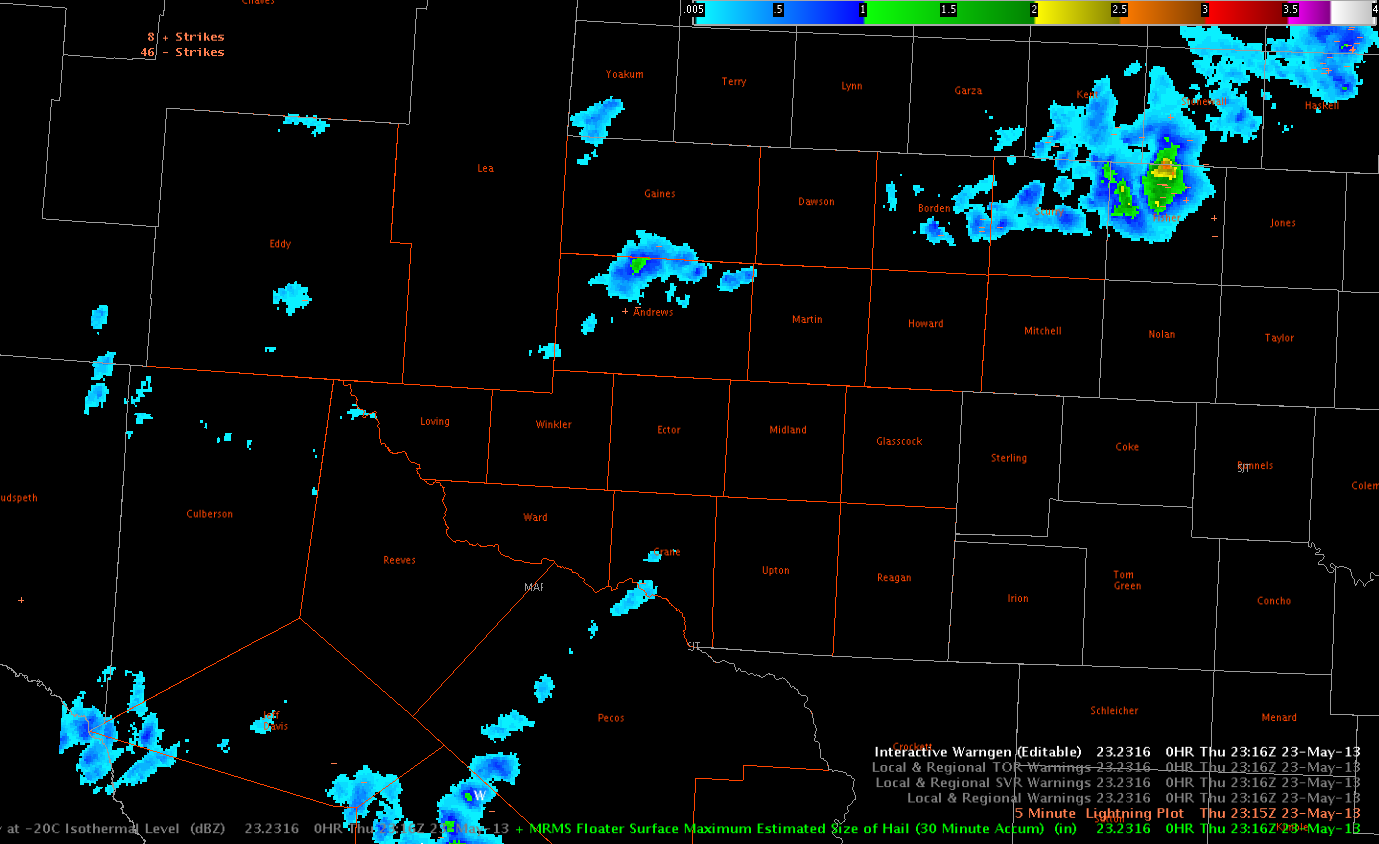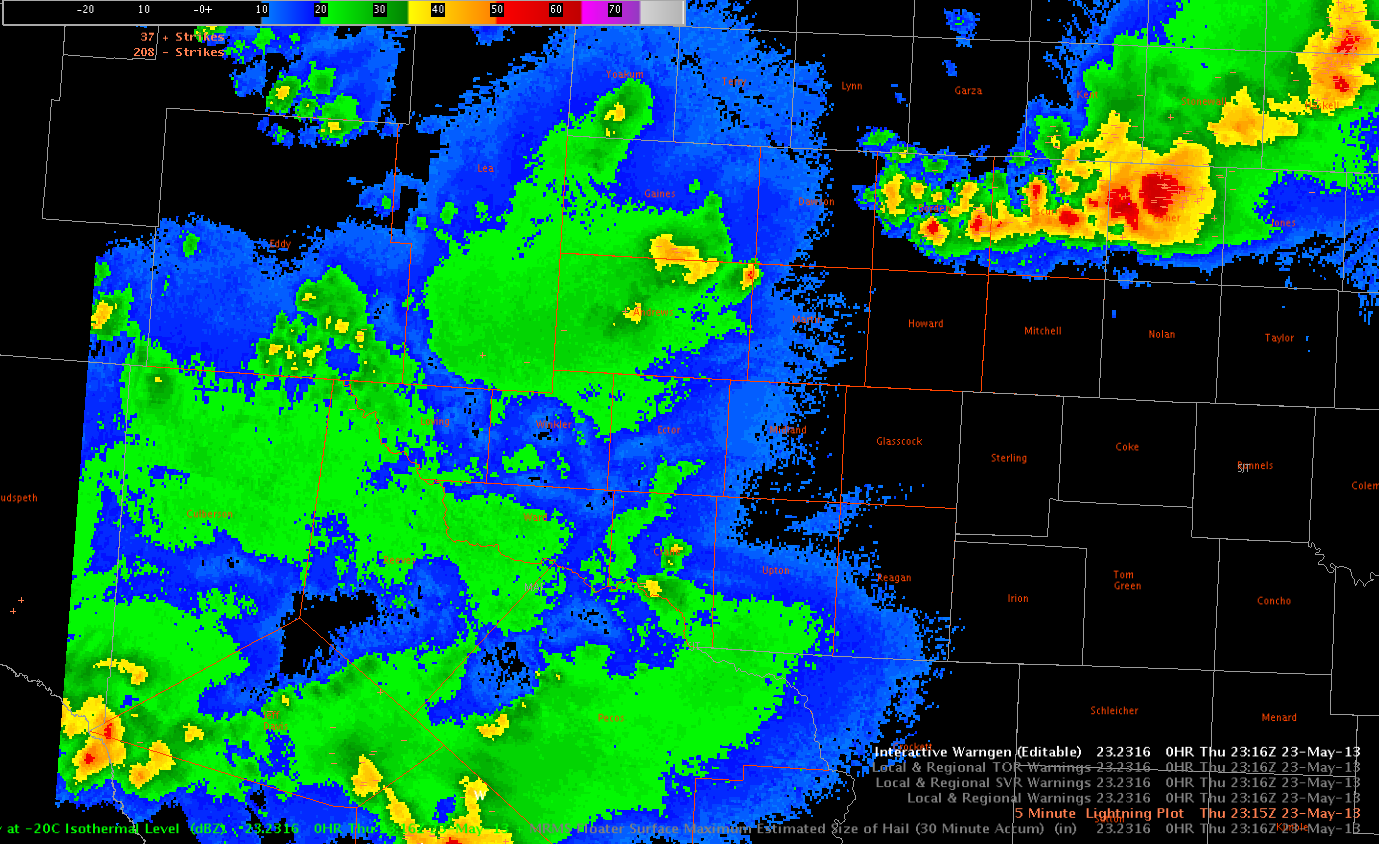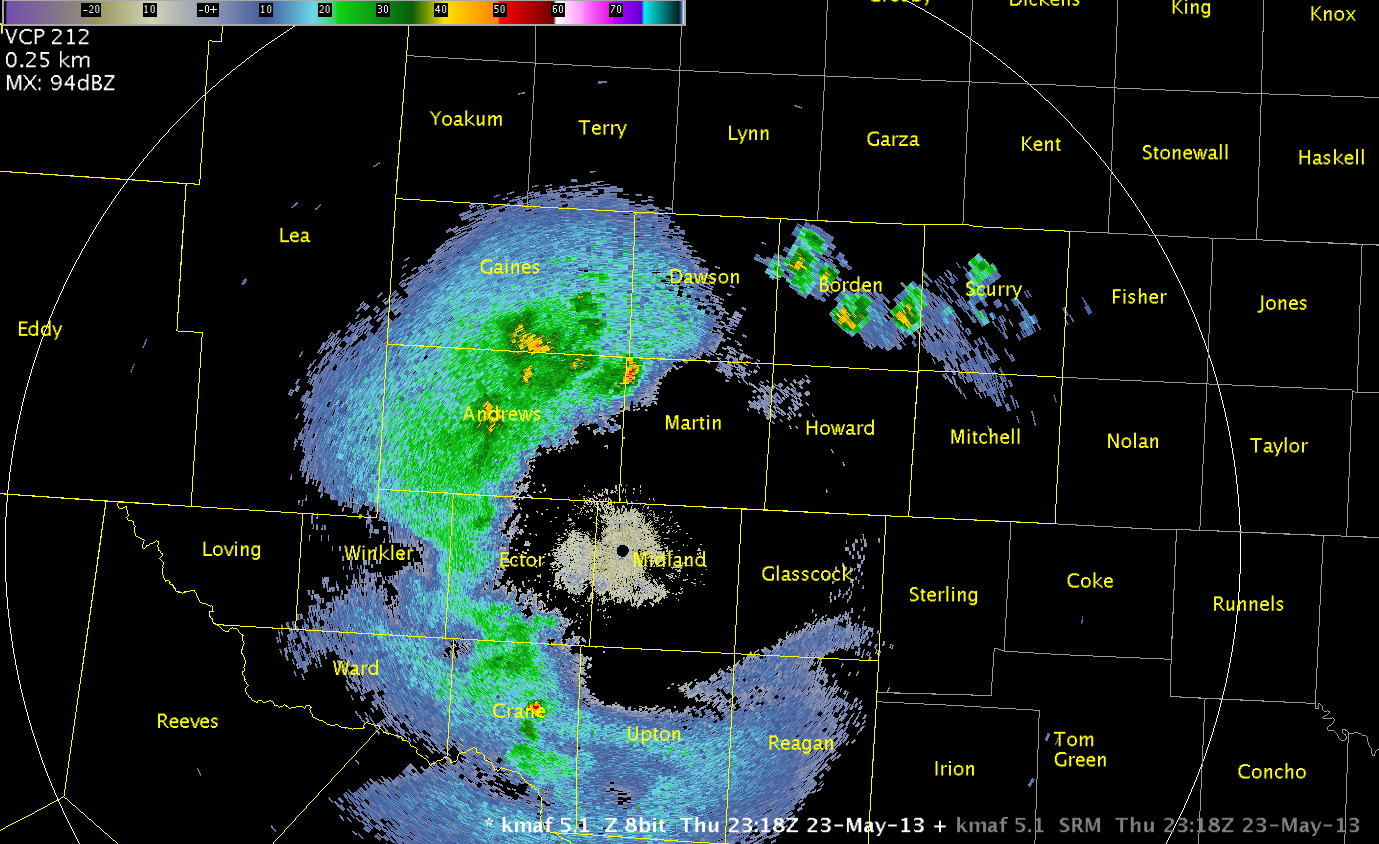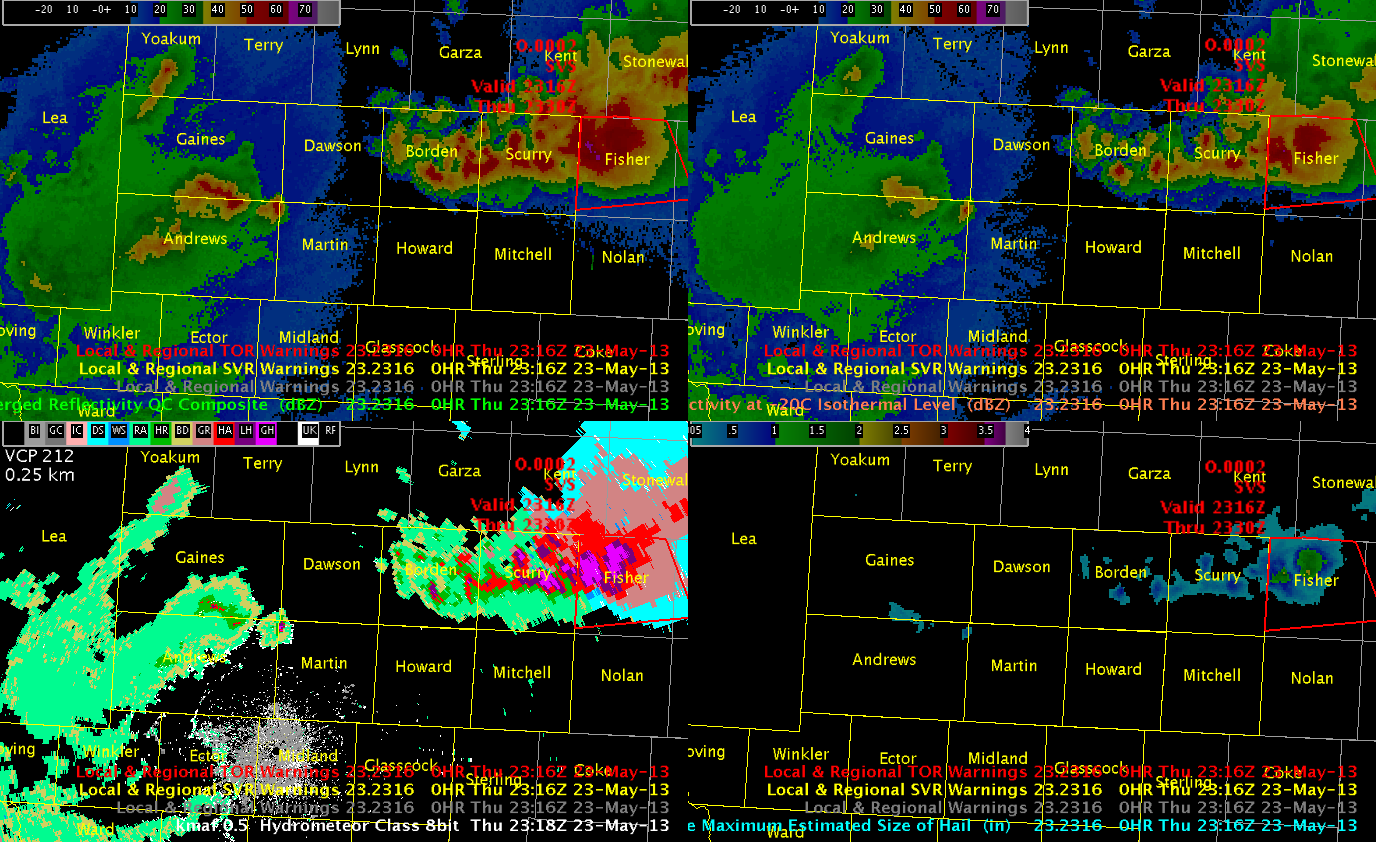Ok, so it’s always important to have a good understanding of new products before going gung-ho so to speak. I thought I’d blog about something different here. On my warning screen today, I had been looking at the 30 minute accumulation MESH product (or so I had forgotten it was the 30 minute accumulation) and yesterday when we were “in” New York, I had a great deal of success using this product, in conjunction with others. Initially, I noticed a >1 inch value over northern Andrews County as shown in image 1 below.

My old warning had expired and I started to prepare a new warning (I was blogging and was late keeping up with things =P ), but then thought it would probably be proper to more closely scrutinize some other data. I switched over to the MRMS reflectivity at -20C and noticed the values were relatively low for this cell at the time, with vales generally below 45dBZ in this same area (image 2).

So, what did I do next? I went back to the data I knew best and was most familiar…the all-tilts. At the nearest time (2318 UTC), I noticed relatively low values of dBZ even near the 20kft level in this area, which corresponded to the MRMS reflectivity at -20C data (image 3).

From there I went to my four-panel of MRMS data, which included the 0.5 degree KMAF HSDA (image 4 below). I had gained familiarity with these products fairly well over the past couple of days and wanted a quick sanity check.

Notice in image 4 above, the low MESH values in northern Andrews County at the time. What? I thought there were values over 1 inch. I went back to my warning screen and noticed that I had the 30 minute accumulation of MESH. I had simply forgotten. However, this had almost resulted in a faulty warning. Now, it could have been the HWT environment. Would I have been so quick to react and careless in an actual operational setting? Probably not. However, this does bring to mind the importance of making sure to look at products carefully, especially new products with which the forecaster may not always be familiar. Yesterday, when we were “in” the BUF office, I had used this product in addition to the MRMS reflectivity at -20C to actually form my polygons, and it had worked pretty well I thought. But those cells were tracking along nicely. Today, the cells were moving quite slowly. So, the 30-min accumulation product may not have been appropriate to use in conjunction with WarnGen. It was hard to discern any movement or much change in the product since the cells were not tracking along much. That’s why it was hard to determine if the >1 inch MESH had happened recently or much earlier in the 30 minute window. Lesson learned. This product may have been fine for SA purposes and perhaps kept on my non-warning screen. These are things to think about for proper warning strategies.
Kris
